I was originally using a 2d Array of "Tile"s to store a procedural generated map with its various contents.
Each Tile contains a List adjacent which allows every single tile to know which vertices are closest to it, touching it on 8 different sides (straight adjacent and diagonally adjacent).
The general idea was taken from Amit's polygonal map generation, but I attempted to simplify it by using a grid setup instead of voronois, however I've run into more trouble than I originally thought would be possible. My current predicament is figuring out adjacency when I've scrapped 2d Arrays.
This is how I was doing it before changing to a list:
private void ConstructAdjacencyList() {
// Create Adjacency List
for (int x = 0; x < mapWidth; x++) {
for (int y = 0; y < mapHeight; y++) {
// Bool to find position of point
bool omitLeft = false; bool omitRight = false;
bool omitTop = false; bool omitBottom = false;
// Enable bools based on position, reset on each loop
if (x == 0)
omitLeft = true;
else if (x == mapWidth - 1)
omitRight = true;
if (y == 0)
omitTop = true;
else if (y == mapHeight - 1)
omitBottom = true;
// Add entries to list based on bool settings
if (!omitLeft) {
// Left center
islandMap[x,y].adjacent.Add(islandMap[x-1,y]);
if (!omitTop)
islandMap[x,y].adjacent.Add(islandMap[x-1,y-1]);
if (!omitBottom)
islandMap[x,y].adjacent.Add(islandMap[x-1,y+1]);
}
if (!omitTop) // Top Center
islandMap[x,y].adjacent.Add(islandMap[x,y-1]);
if (!omitBottom) // Bottom Center
islandMap[x,y].adjacent.Add(islandMap[x,y+1]);
if (!omitRight) {
// Right Center
islandMap[x,y].adjacent.Add(islandMap[x+1,y]);
if (!omitTop)
islandMap[x,y].adjacent.Add(islandMap[x+1,y-1]);
if (!omitBottom)
islandMap[x,y].adjacent.Add(islandMap[x+1,y+1]);
}
}
} // End Adjacency
Debug.Log ("Adjacencies Built");
}
The x, y values now are held in islandMap.point (A Vector 2d storing the x and y values generated as follows:)
public MapController() {
width = height = (int)Mathf.Sqrt (tileCount);
// Lists for points
var points = new List<Vector2>();
// Build a random set of points.
for (float x = 0; x < width; x++) {
for (float y = 0; y < height; y++) {
points.Add(new Vector2(x,y));
}
}
map = new Map (points, width, height, lakeTreshold);
}
And the Map itself has the following currently:
public class Map {
Func<Vector2, bool> inside; // Contains function to randomly seed area
bool needsMoreRandomness;
public List<Tile> islandMap; // Previously was Tile[,] islandMap
public int mapWidth { get; private set; } // Calculated as Sqrt(totalPoints)
public int mapHeight { get; private set; }
Along with other methods such as the ConstructAdjacencyList() method I'm currently stuck on.
So how can I go on about constructing an adjacency list of surrounding points without relying on array positioning? Could I temporarily reference the entire list from an array, place references to each tile in the entire list in this 2d array, setup adjacencies and then remove the array without losing the information? I believe it would only use references, so it should be fine... Each tile contains an index to store the order with which it was built like so:
foreach (var point in points) {
var p = new Tile { index = islandMap.Count, point = point };
p.border = point.x == 0 || point.x == mapWidth || point.y == 0 || point.y == mapHeight;
islandMap.Add (p);
tileLookup[point] = p;
}
Sorry if this is too long... I just realized it's quite massive -.-
